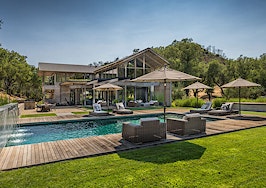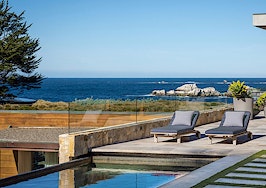When it comes to buying a second home, your clients have several options.
The default choice — buying a whole home — offers the most flexibility. However, the high costs of purchasing and maintaining an entire second home leave many buyers wondering if it’s worth it.
The good news is that you can guide your clients toward other ownership paths to make their second home dream a reality. There are three paths to explore with your clients: timeshares, fractional ownership, and co-ownership.
The right choice starts with the right planning
First things first: You’ll want to encourage your clients to determine what matters the most to them. Second-home paths offer varying levels of equity, flexibility, and responsibility. Buyers should ask themselves: How much time will they spend in their home? Will they plan their stays ahead of time or be more spontaneous? How much time do they have to customize and maintain their home?
There’s no one-size-fits-all approach. However, with the proper planning, your buyers can purchase a second home that works with their schedule, their budget, and their time and willingness to maintain and manage it.
Once you’ve helped them determine these parameters, they can consider the different ownership paths.
The truth about timeshares
The first option is a timeshare. With a timeshare, buyers purchase the right to use a vacation property or condo for a set period. A timeshare is suited for buyers looking for one- or two-week vacations a year. Rather than owning the home, buyers are more like “renters” at the timeshare. While they won’t need to maintain the timeshare, they don’t have equity in it. If owners want to sell off their timeshare in the future, most timeshares sell at a significant loss (if owners are able to sell at all).
In addition, a timeshare does not provide any specific benefits to agents as they are sold exclusively through a timeshare company.
Fractional ownership, fractional benefits
Fractional ownership involves a buyer purchasing interest in a vacation condo or resort property with other buyers to share costs. Shares are more limited on a fractional compared to a timeshare, meaning buyers can have more access to the home.
Fractional ownership works for buyers looking for deeded ownership, shared maintenance costs and longer vacations in resort properties. However, it can be costly to purchase a fractional and even more expensive to maintain one over time. As an agent, you can earn commission on a fractional, but buyers are required to pay membership to a club or property management group. Resale opportunities are also uncertain.
The difference with co-ownership
A co-ownership model is a step above fractional ownership. With co-ownership, buyers own a share of a private, high-value home with a small number of other buyers. This path is a good option for clients looking for more accessibility and flexibility than a fractional ownership and more equity than a timeshare.
Instead of DIYing their co-ownership plan, buyers can choose a fully managed LLC co-ownership model and enjoy true real estate ownership. LLC co-ownership has been around for years, but it can be hard to self-manage. A program like Pacaso offers the right balance, enabling clients to enjoy and use a second home for several weeks throughout the year without the hassles, responsibilities and costs associated with other types of ownership. In addition, as an agent, you earn a referral commission on each Pacaso share your clients’ purchase.
With the right path to ownership, your buyers can secure a more meaningful place to call home, which is a win for them and a win for your business.
About Pacaso
Pacaso is the modern way to buy and own a second home. We bring together buyers to purchase and collectively own a second home, and provide a fully managed, end-to-end service. We’re making second homeownership possible and enjoyable for more people.











